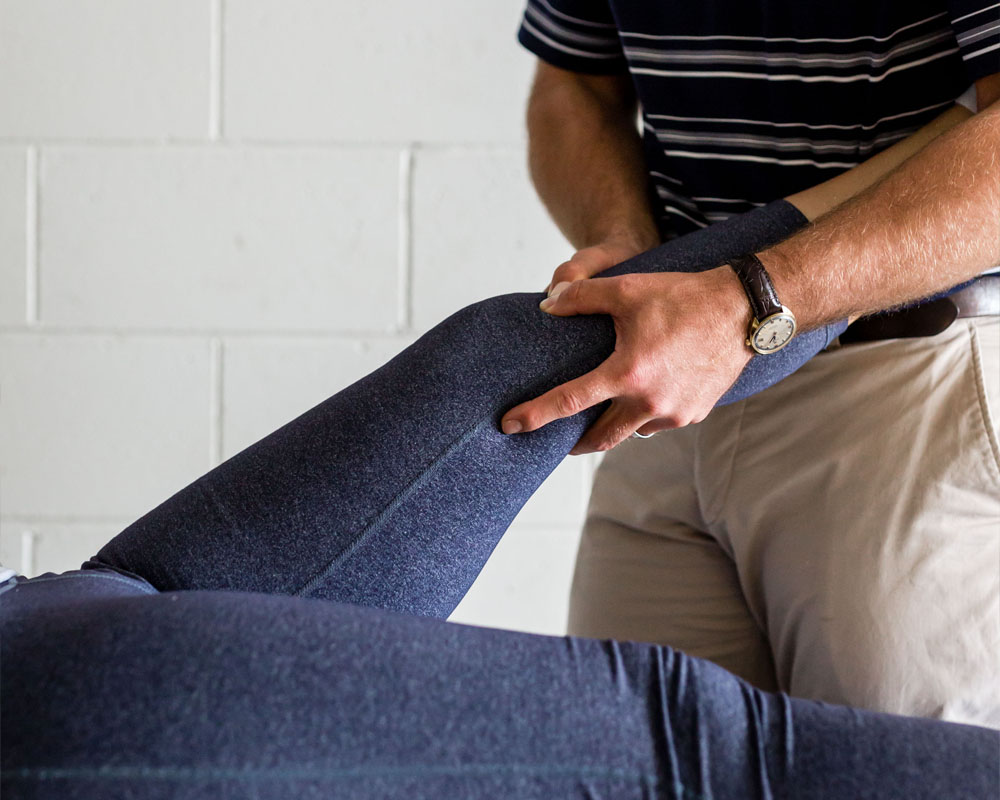Patellofemoral Joint Pain

CATEGORY: SPORTS & MUSCULOSKELETAL
Patellofemoral Joint Pain
Are you running with knee pain?
Patellofemoral joint pain (PFJP) is one of the most common causes of knee pain in runners. PFJP is the term for the pain that you may feel behind your kneecap, where your patella (knee cap) articulates with your femur (thigh bone). Generally, this pain is caused from overuse or repetitive actions. If we think of the task of running where we are repeatedly placing one foot in front of the other time and time again, coupled with ground force reactions (which tend to be 2-3x your body weight), we can see how this may become an issue.
PFJP often develops from poor patella alignment, which in time can affect the joint surface behind the patella, causing inflammation and pain.
Depending on the severity of symptoms, you may find that you only experience pain while running, or in fact it can start to interfere with other activities such as walking, squatting, lunging, kneeling and going up and down stairs.

Following a physio assessment to diagnose PFJP, relevant findings can include:
- Iliotibial band tightness – The ITB is the thick band of fascia that runs on the lateral aspect of your thigh from your hip to your knee. If the ITB is excessively tight or has a lack of mobility, this can tug or pull at the knee leading to a lateral tracking of the patella which inevitably alters the forces that go through the knee joint and the patellofemoral joint.
- Rotation of the hip – where the ball and socket joint of the hip are rotating or twisting into a suboptimal position which can lead to altered forces and consequential strain being placed through the knee.
- Decreased gluteal strength – potentially leading to increased force absorption through the knee joint as a result of reduced or ineffective force absorption and power generation through the gluteal muscles and altered gait.
- Reduced quadriceps strength – like the glutes, weak quads can increase the load being absorbed through the knee joint as a result of reduced quads force absorption and power generation which can alter the position of the knee joint and gait. In time, these factors can expedite the wear and tear and irritation on the knee and patellofemoral joints.
- Tight hamstrings and hip flexors – can lead to altered gait and mobility in addition to altering the position and tracking of the knee joint and patellofemoral joints.
- Decreased calf length – tight calves can have an impact of heel strike and running efficiency, force absorption and gait which can all have an impact on the forces being absorbed through the knee joint and the position of the knee itself.
- Overpronated or flat feet – can lead to a rotation through the knee which places increased loads especially through the medial aspect of the knee joint.
- Lateral tracking of the patella – alters the load and increases irritation of the knee joint.
Strengthening exercises for the muscle groups around your hip, knee and ankle can help improve stability and alignment of the patella. Combine these with a combination of flexibility and stretching exercises that are focussed on lengthening the structures that may be contributing to the friction in the patellofemoral joint, can all help reduce your symptoms. While this may help reduce your symptoms, it is important to get a rehab programme that is tailored to you to include gait analysis and correcting movement patterns to help avoid recurrences in the future, and get you back running, pain free, as soon as possible.
If you have any concerns with running or think you may have patellofemoral joint syndrome, please reach out to our friendly admin team and they will be able to book you in at a time that suits so that you can get back to pain free running as soon as possible!


Leave a Comments
You must be logged in to post a comment.